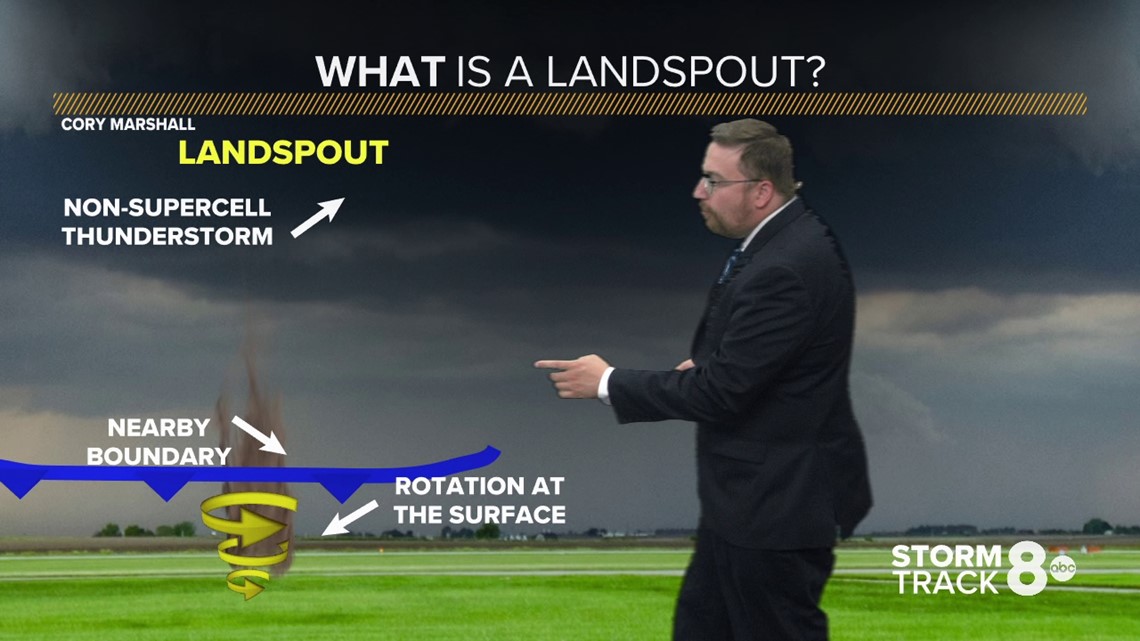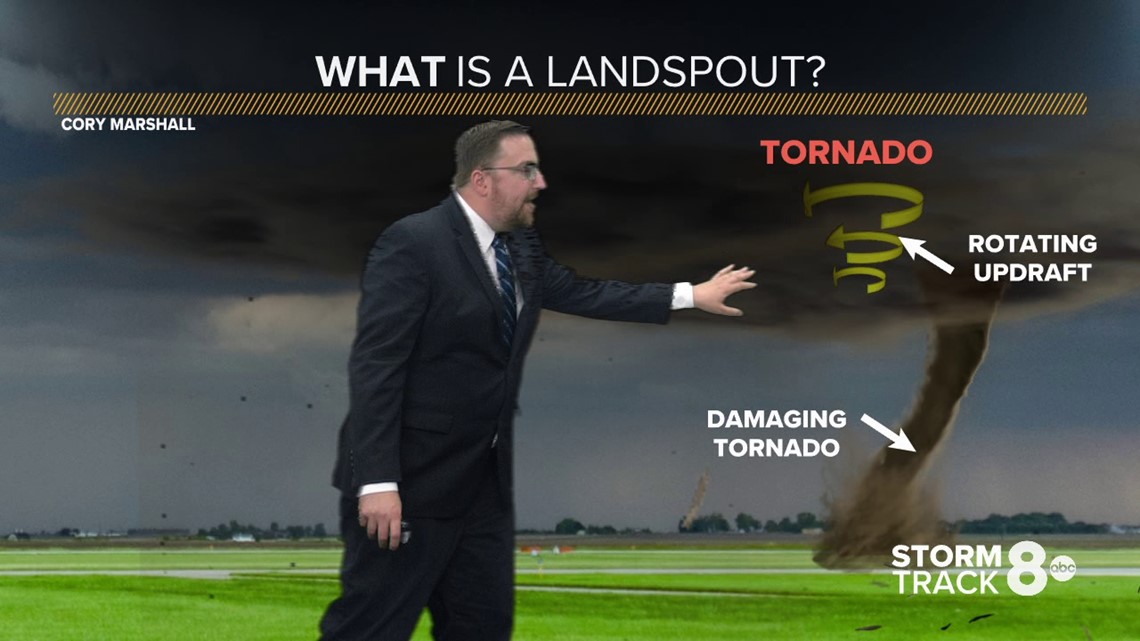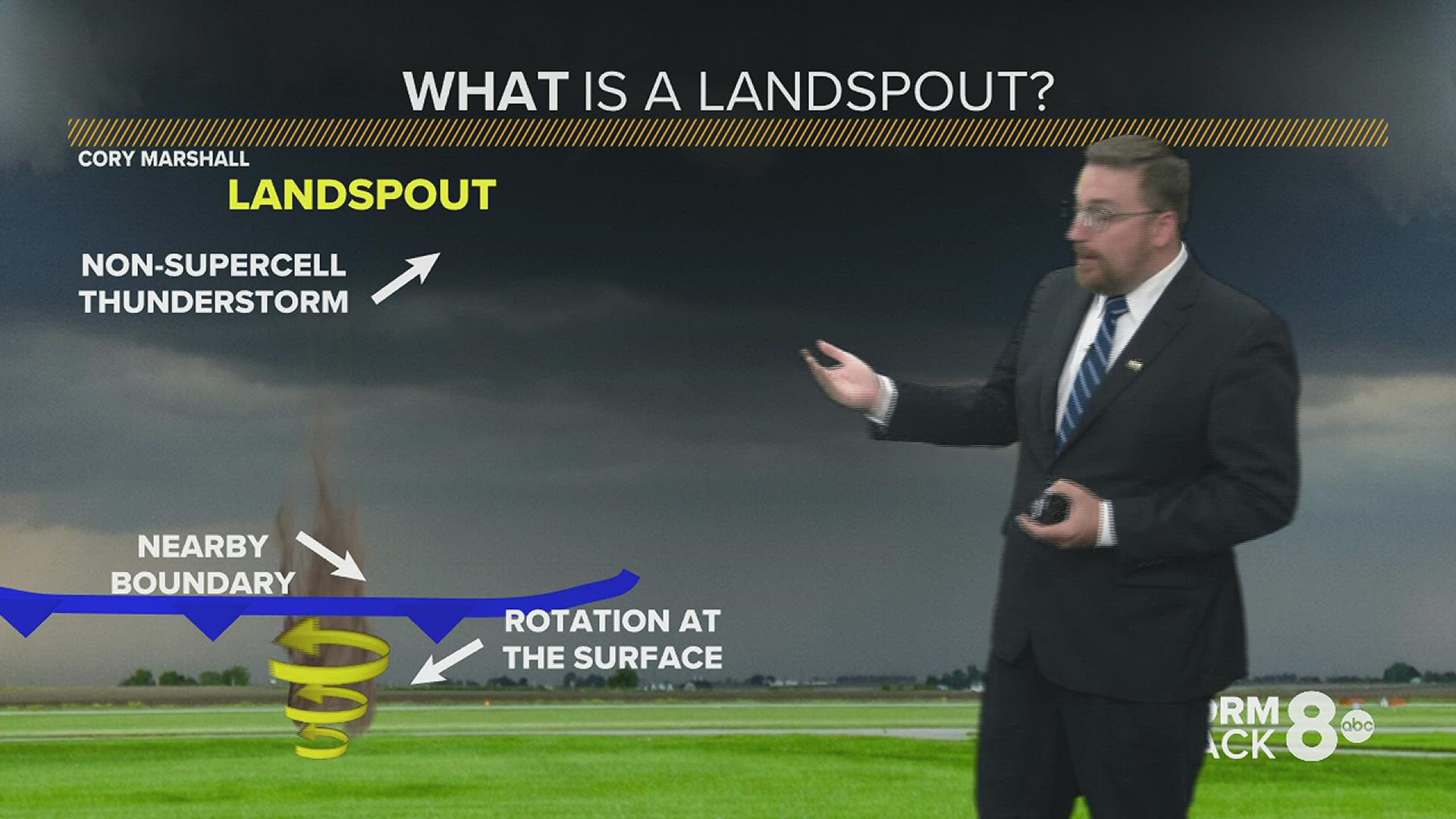MOLINE, Ill. — Our weather turned a bit more active Friday afternoon and evening, May 13 as a cold front slammed into the hot and humid air mass laying across the Quad Cities. Although the threat of severe weather wasn't extremely high, we did have a few ingredients in play to develop some landspouts, especially south of the Quad Cities.
In total, three landspouts were observed across our region Friday evening. Two were observed near Monmouth, Illinois, with a third near Good Hope, Illinois, in McDonough County. All three produced no visible damage and were given a rating of EF-U from the National Weather Service in the Quad Cities.
The Quad Cities is no stranger to landspouts. Most recently, several landspouts were reported in June 2019 across northeast Iowa. The National Weather Service will often issue tornado warnings for these features because technically, landspouts are tornadoes. They just form under different circumstances.
You may be wondering, what is a landspout and how are they different from tornadoes? Let's dive in!


Even though a landspout is considered to be a tornado, there are some big differences in terms of how they develop and what threats they pose. Tornadoes develop from supercell thunderstorms that involve significant amounts of rotation within the storm itself. Landspouts form from the rotation that is located near the ground, usually along a nearby boundary.


In Friday's case, we had several boundaries laying across the region, including the cold front itself. While some modest rotation was observed inside the storm, the amount of wind shear, or change of wind direction/speed with increasing height, was quite low and not supportive of strong, damaging tornadoes.
In summary
Landspouts produce minimal damage, are on the group for very brief periods of time and typically have winds less than 50 mph.
Tornadoes are life-threatening, on the ground for several minutes and can produce winds up to 200 mph.
In the event of a landspout
If you see a landspout, you should still seek shelter as flying debris will be likely within the core of stronger winds, which is why the National Weather Service will issue tornado warnings for this type of tornado, even though winds are not nearly as strong as a traditional tornado.
Have a question you would like me to answer in a future Ask Andrew segment? Click here!

